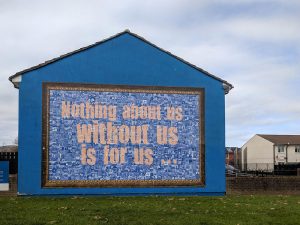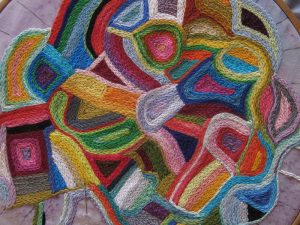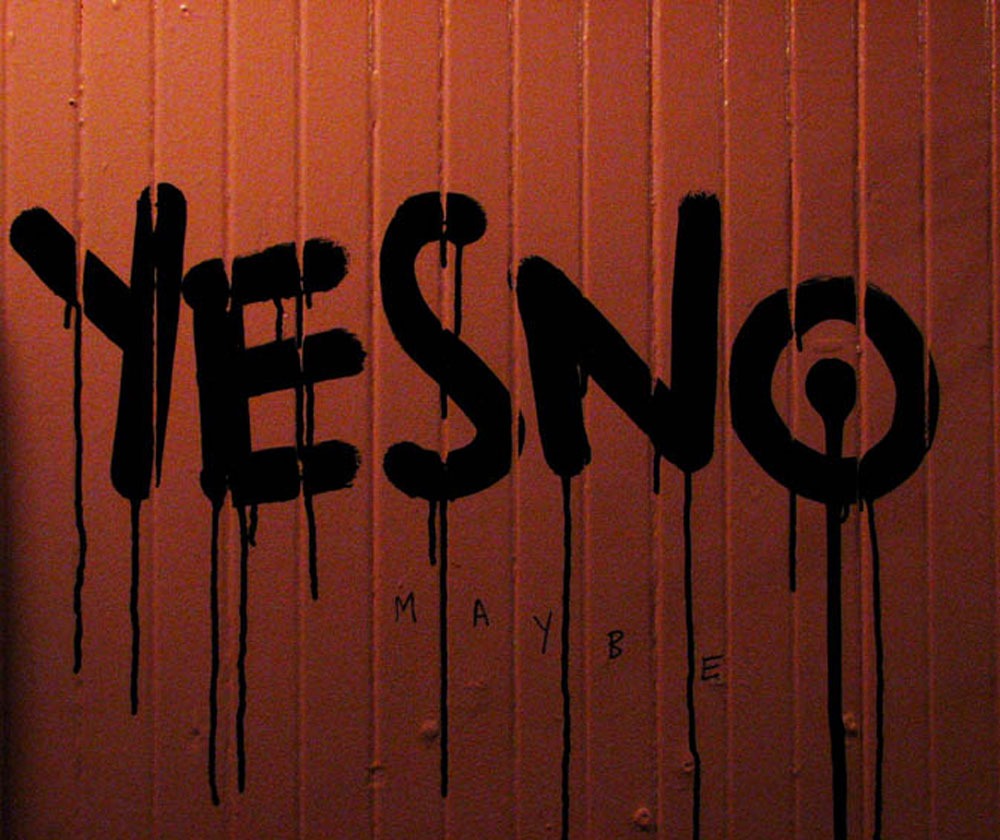As the Nonprofit Quarterly approached the topic of how socioeconomic class functions in the nonprofit sector, we tried to look at the “what” and “why” questions together—what is class-based power and why should nonprofits concern themselves with it? Our intention here is not to promote a collective whine about what is being done to “us,” but to help “us” all recognize how we actively participate in a process of upholding monied influence and excluding marginalized voices. The nonprofit sector may be one of the more class-driven components of this society, and we should at least recognize how those dynamics function.
The way nonprofits uphold monied influence is, unfortunately, by replicating hierarchies of elite influence and decision making. In so doing we short-sightedly gut our own populist power bases and, as a result and not coincidentally, provide unimpeded avenues for the domination of public policy by class-based power.
In this issue, we have defined class power as the consistent ability of one interconnected group to mobilize resources, and to be or determine the locus of decision making on important issues that affect many others. The consistency and steadiness of economic group membership—the fact that most rich people were born rich and most poor people were born poor—is particularly based on the ability of elites to hold the course and persist over time—usually over generations—in holding the reins of decision making. This is primarily and most visibly linked to having wealth, although racial and ethnic ties, social networks, and family relationships are contributing factors. Wealth is not the only kind of power, but it is a constant, quiet, and effective influence in universities and think tanks, in government through political contributions and lobbying, and in foundations. That a class of people in aggregate acts in self-interested ways is as natural as is the desire to obscure the extent and effects of that behavior.
The existence of entrenched power and wealth was one of the traditions of the Old World that early Americans said they wanted to leave behind. President Franklin D. Roosevelt, in a message to Congress on June 19, 1935, declared the principle:
The transmission from generation to generation of vast fortunes by will, inheritance, or gift is not consistent with the ideals and sentiments of the American people. Great accumulations of wealth cannot be justified on the basis of personal or family security . . . Such inherited economic power is as inconsistent with the ideals of this generation as inherited political power was inconsistent with the ideals of the generation which established our government.1
A core public ideology of the United States is that the nation was founded to be a classless and caste-free society, with equality and opportunity for all. Our national rhetoric is fiercely democratic and egalitarian, but the facts are at odds with this ideal, and the United States now holds the distinction of having the largest wealth gap among the world’s advanced industrial countries. According to Edward Wolff of New York University, “Where the top 1% in this country own 38% of all wealth, in Great Britain (our closest rival in terms of inequality) it is more like 22 or 23%.”2 This has worsened considerably over the past 25 to 30 years in this country, even while inequality has lessened in many other countries.
This creates a clear hierarchy of wealth—but is that a bad thing in and of itself? The wealth hierarchy does have inherent moral implications as the country’s productivity gains increasingly add to the coffers of the rich while other wages lag and pensions disappear (among other things), but even sharply increasing inequality is apparently made culturally acceptable by the persistent belief that each individual American can improve his or her status by dint of his own effort and merit. However, the American belief in classlessness based on social mobility is at odds with the facts that indicate that the rich do tend to get richer while the poor—overall—do not.
In the 2006 study “Understanding Mobility in America,” Tom Hertz of American University found that a child of the rich is five times more likely to end up rich than a poor child. This is hardly surprising, considering the advantages that children of wealth have in terms of education, health care, and contacts; but Hertz goes on to say that, “By international standards, the United States has an unusually low level of intergenerational mobility: our parents’ income is highly predictive of our incomes as adults. Intergenerational mobility in the United States is lower than in France, Germany, Sweden, Canada, Finland, Norway and Denmark. Among high-income countries for which comparable estimates are available, only the United Kingdom had a lower rate of mobility than the United States.”
Race also plays a striking role in levels of wealth and rates of social mobility—Wolff points out that African Americans make only 60% of the income of the average white family and hold only 18% as much wealth (assets as opposed to income). Upward mobility is lower for blacks than it is for whites. “African American children who are born in the bottom quartile are nearly twice as likely to remain there as adults than are white children whose parents had identical incomes, and are four times less likely to attain the top quartile . . . The difference in mobility for blacks and whites persists even after controlling for a host of parental background factors, children’s education and health, as well as whether the household was female-headed or receiving public assistance.”3
But still:
Many Americans believe their country remains a land of unbounded opportunity. That perception explains why Americans, much more than Europeans, have tolerated the widening inequality in recent years. It is OK to have ever-greater differences between rich and poor, they seem to believe, as long as their children have a good chance of grasping the brass ring.
“As Rich-Poor Gap Widens in U.S., Class Mobility Stalls,” Wall Street Journal, May 13, 2005
Like lottery ticket buyers, “can do” Americans tend to be overly optimistic about the prospects for themselves and their children.
The wealth gap and the declining rate of social mobility do not occur in a vacuum, of course. The reinforcing relationships between politics and money, and between major media outlets and money, have allowed class power to perpetuate itself through political action, and to hide its existence through message and medium.
David Wessel in The Wall Street Journal described the situation:
Technology, globalization and unfettered markets tend to erode wages at the bottom and lift wages at the top, but Americans have elected politicians who oppose using the muscle of government to restrain the forces of widening inequality. These politicians argue that lifting the minimum wage or requiring employers to offer health insurance would do unacceptably large damage to economic growth.4
A task force convened in 2004 by the American Political Science Association and the Russell Sage Foundation concluded that citizens with lower or moderate incomes speak with a whisper that is lost on the ears of inattentive government officials while the advantaged roar with a clarity and consistency that policy-makers readily hear and routinely follow.
The United States has a broad constellation of voluntary associations, organized philanthropies, public spirited individuals, and economic and social reformers—about a third of these are in some way seeking to counter the effects of poverty. This preponderance of attention to the poor is rooted in this country’s ideology about equal voice and opportunity, as is the conceptual framework linking voluntary associations with an active pluralistic democracy.
But the larger society’s class dynamic sets conditions for the work of nonprofits, whether they work on poverty issues or on any one of a host of other issues or activities. Public discourse and public policy frameworks in the United States are famously vulnerable to influence from economic and social elites. The frame and range of likely actions are defined by public policy and public discourse, whether our nonprofits are working in education, health care, community improvement, children’s recreation, education, housing, arts, environmental issues, or preservation. A consciousness of the larger social and economic system surrounding our organizations is a basic literacy for organizations working for public benefit.
Nonprofits can not afford to ignore the effects of class or pretend that it does not exist. Randy Stoecker in “Community Development and Community Organizing, Apples and Oranges? Chicken and Egg?”5 sets up a vivid example of an archetypal power conundrum in one field of practice and how that profoundly affects programatic approaches and impacts outcomes. Stoecker frames the problem by reminding us that CDCs are meant to promote comprehensive community development often in low income communities and in the context of our existing political economic system.
Stoecker posits that lifting up poor communities—large numbers of poor people all at one time—would mean altering our economic structures,
So what happens in the community development model is that people’s need for a transformed economy providing a wealth of good jobs becomes replaced with training programs for people to compete for an extremely limited good job pool. People’s need for affordable housing that is controlled by its occupants becomes replaced by a tradeoff between expensive home ownership and affordable rental housing. People’s need for high quality health, daycare, and other services becomes translated into sporadic, overcrowded, and inefficient low quality stop-gap programs. Not only can a model emphasizing cooperation and denying class conflict not work to end poverty and oppression, it’s not even supposed to work.
The community organizing model is much better suited for attacking the structural barriers that prevent poor communities from lifting themselves up. In a capitalist society, equal competitors make deals because each either has something to offer or something to take away. But when CDCs attempt to make deals with these power holders, they have nothing with which to bargain. They are in the powerless position of begging—for lower loan rates, reduced construction costs, more open hiring practices, etc. CDCs have little to offer as inducement for power-holders to say yes, and little to withhold if they say no. The community organizing model, however, substitutes the lack of money resources with people resources. The bargaining chip poor communities have is their cooperation. If they can collectively withhold their cooperation or, even more powerfully, can disrupt the activities of power holders, they have something to bargain with.6
Not all community-based organizations, of course, accept Stoecker’s contention that negotiating and partnering with business and political power interests undermines their ability to advocate and organize for significant social and political change, and many are making strenuous efforts to revive and expand CDC organizing programs, but the conceptual and practical challenges for CDCs trying to combine community organizing and housing development cannot be ignored.
Nonprofits must care about how class-based power evidences itself in our environments because to be effective, our programs must either work with that power or try to break its hold. Deciding which of the two is the appropriate course or how to mix the two is critical. How well we do that may be determined by how well we know where power sits and how it functions.
Nonprofits exist within the larger environment, where class power is both prevalent and denied. Like fish, they do not always notice the water they swim in and so themselves may replicate some of the exclusionary elements of class power. How do these play out in and around nonprofits and the communities in which we work? How do we reinforce those dynamics ourselves? Is the nonprofit sector in its role as a major venue for collective citizen action playing an active and significant role in rebalancing the level of influence among groups in this country? Or is the nonprofit sector a palliative—a bearer of false hopes, a cooperative blind to shore up well ensconced inequity?
Surely no organization consciously sets out to shore up inequality, though elsewhere in this issue Joan Roelofs argues that this is essentially what they do.
Nonetheless, this raises a very real question: To what extent does the net effort of U.S. nonprofits and philanthropy increase the equality of conditions? This is perhaps the meta-level outcome measure the nonprofit sector is not prepared to document, but should at least be prepared to make inquiries about.
Finally, how can nonprofits pragmatically conduct themselves in ways that limit the influence of class-based power on their work and on the future of the country, or alternatively (or in addition), how can we employ the nonprofit sector as a mechanism for confronting and overcoming some of the barriers of socioeconomic class in the U.S.?
These are the questions addressed by this issue of the Nonprofit Quarterly. We intend to advance the conversation—a difficult one for two reasons: because our national mythology maintains that class in our economic system is much more permeable than it really is, and because of the dependence of a large part of the nonprofit sector on donations from people and institutions in the upper echelons of wealth and privilege in our economy and society.
One of the most painful findings of the Task Force on Inequality is this: “Even when the poor are spoken for they are unlikely to do the speaking themselves . . . government officials are likely to hear about their concerns, if at all, from more privileged advocates who speak for the disadvantaged.” This finding aligns with an article by Cindy Gibson in the summer 2006 issue of NPQ. How does this lack of self representation influence the way these issues are understood?
A few decades ago, John McKnight of Northwestern University and others championed the idea that power and leadership and assets were everywhere in the communities in which we work and that we as community workers needed to be more attentive to where these sources of energy resided. Where organizing had descended into a kind of victim ID and mobilization against unjust conditions, they rightfully urged us to approach the people of our communities as the source of powerful and creative public action. This jibes with what the Nonprofit Quarterly believes is one of the central purposes of this sector: to provide venues for collective action for the public good and to act as a seeding mechanism for pluralistic democracy.
It would help nonprofits in the United States to look at the tension that is being worked out in the NGO sector elsewhere in the world—between traditional charity and civil society organizations. In other countries where democracy is newly emergent and a treasured goal, it is quite clear that there is a difference between the two in terms of their capacity to fuel active democracy. Charity is derived from a tradition of alms-giving by those that have to those less fortunate. Civil society organizations see themselves as rooted in rights of free speech, free association, and self-representation. Often, they focus on increasing the political, social, and economic agency of marginalized communities. They are designed to build the power of those communities so that the interests of members can be accurately pursued within the larger whole of the nation.
These are two very different traditions that can be quickly distinguished as the “for” or “of” approaches. They denote on the one hand a solution visited upon, and on the other a solution pursued by those who are intimately affected by the situation being addressed. In the U.S.’s nonprofit sector, these two traditions are mixed in ways that can be confusing, even to those who are designing such important variables as the organization’s governance structure and accountability systems, as well as its all-important mix of revenues.
Sign up for our free newsletters
Subscribe to NPQ's newsletters to have our top stories delivered directly to your inbox.
By signing up, you agree to our privacy policy and terms of use, and to receive messages from NPQ and our partners.
In Who Rules America, G. William Domhoff suggests that it is most accurate to understand the upper class as a loose network, anchored by a set of institutions like universities, private clubs, cultural institutions, industry, and some historic charities. This network need not be monolithic or well coordinated to exert effective influence. It has money to fund political campaigns, lobbies, think tanks, and universities. It owns media outlets. It need not have a single political point of view, as long as it has a set of overriding concerns in which members have self-interest.
Clearly, this is a great boon to the nonprofits on the list of the monied class’ anchoring institutions, so we see the wealth gap replicated in the endowment differentials among the organizations in this sector. Large endowments are parked in universities, hospitals, certain types of cultural institutions, and large foundations. The trustees of these organizations normally reflect their upper-class identification, and the institutions have the same type of persistent influence as does a wealthy family.
Very large accumulated assets in nonprofit institutions have their own gravitational effects, not only leading to lower program expenditures proportionate to assets, but to greater CEO, director, and officer pay. These endowments also tend to persist longer than they do in for-profit institutions. In other words, rich nonprofits tend to maintain wealth over generations, just like rich people (Core, Guay, Verdi).7
Institutions that represent the interests of other classes mirror the economic frailty of their clients, and suffer accordingly, as shown in “Battered Agencies.” (Reed, Lally, Quiett, 2003)8
Note the word “represent,” rather than “serve.” This distinction goes back to the “of” or “for” question. It is a question of ownership—a term we tend not to use in the nonprofit sector because it is not entirely accurate, but in thinking about ownership as the ability to make decisions about the future of a thing, we must look to boards of trustees—governing boards (please see “Who Owns Your Nonprofit” by Judith Millesen, NPQ Fall 2002). When you look at organizations with governing boards that do not include wealthy individuals, you generally are looking at organizations without significant investments.
Additionally, many nonprofits look to funding institutions governed by wealthy individuals and individual wealthy donors for support, not to mention government, often influenced by monied players. Trying to gain and keep the attention of these institutions often appears to require us to pose as peers in the way we talk and the frames of reference we use. This may take us out of peer-ship with those whom we have set up to represent. This may be our very own Stockholm syndrome—we are held hostage in ways we can not fully fathom.
So it’s not an even playing field. Organizational sustainability is not necessarily a result of vision, foresight, frugality, and hard work—just like individual success is not entirely dependent on these virtues. There is the odd outlier but, for the most part, the large preponderance of nonprofits like the large preponderance of individuals will not have their hard work rewarded by riches—at least not cash riches. And poor people’s organizations bent on seeking more economic equity for their communities have a far more difficult path to walk.
So what do nonprofits without these connections to massive sources of capital and prestige-based connections have that might place them somewhere on the field of play?
The nonprofit sector may have the potential to overcome money-based power, but not if it refuses to acknowledge that such a thing exists and not if it allows its own populist power base to waste away.
Nonprofits are critically important venues for people to take action—to better their communities, the nation, the world. Some of these endeavors will be relatively inoffensive and even very attractive to people with wealth, and their budgets will reflect this; some will be of no interest or absolutely noxious. The endeavors that are of no interest or noxious to those in power—most of this sector—should not expect to have a cash endowment that allows them to pursue their mission unimpeded. What nonprofits do have as an endowment is hidden in the core of their purpose—and written out of the war on poverty—is their ability to attract and collectively deploy the will of ordinary people. But nonprofits often undervalue this endowment and allow it to waste away while we chase after flimsy specters. We are told that we need to be more businesslike, more professional, have influentials on our boards and generally become more acceptable through greater mimicry. But it’s mimicry of power nonprofits are urged to—not the serious building of economic and political alternatives that might last the course of time.
Many nonprofits limp along, depending upon transient access to halls of more permanent power, while themselves excluding those who don’t have even that transient access from strategic decision making. This can never be anything but weak. Often in so doing they lose traction, which, after all, requires friction. Nonprofits too frequently translate for people who are capable of speaking for themselves, thus undercutting the credibility of their own power base, and they are so warned off of political influence that they tend to believe that the restrictions on their lobbying and advocacy activities are greater than they actually are.
In all of this, nonprofits waste their dynamic power, which is their ability to mobilize the people of this country to help in its proper governance by the people, for the people—all the people.
If energetic and vibrant participation is the strategic advantage of the nonprofit sector and it is one significant way in which we can assure a plurality of voices in governing our uniquely diverse country, nonprofits need to think much more carefully about effective constituency engagement and how to develop critical mass through networks. Nonprofits need to understand the degree to which badly designed financing systems or governance systems can draw them off track. And they need to think about movement building that breaks the close to absolute hold that big money has on politics in this country. Most of us are limited these days in being able to imagine movements that might progress without the seemingly inevitable divisions and in-fighting. Nonprofits want to be the institution that can take credit for a campaign or the outcome, because that is our path to funding and institutional longevity—but this focus on institutional longevity as a goal may be in conflict with movement building.
The extent to which nonprofits can influence the future is dependent on the extent to which they realize that their base of power is accumulated in the collective. The collective has to be engaged in each nonprofit through membership and other governance models that build the civic participation of the constituencies of each individual organization—and then by accumulating larger power blocs from the constituencies of each group into loose networks of mutual intention. This is where our real power, and often our constituents’ power—social, political, and economic—lies.
G. William Domhoff, in his book Who Rules America, says our reticence to talk about class is deeply rooted in the justification of our nationhood. The principle of governing with the consent of the people is ingrained in our psyches as core to our democracy, as is the idea that our nation is egalitarian. Any evidence to the contrary (the influence of political action committees [PACs] and corporate funded lobbies or the discussions of the persistence and growth of the wealth gap) can easily be spun as dangerous radicalism because it flies in the face of our foundational myths. “Any small group or class that has power over the people is therefore perceived as illegitimate. This may explain why those with power in America always deny they have any.”
The Nonprofit Quarterly has noted only two occasions on which the topic of class has emerged into public discourse in the past year. The first is when Katrina hit and we were barraged with the storm’s undeniably disproportionate effect on poor people and people of color in that region. At that time, you may remember, the media promised a renewed dialogue on the linked issues of race and class uncovered by the disaster. This national dialogue never occurred.
The other situation, to be parked under the cynical manipulation category, was when some legislative leaders denounced any criticism of the Bush administration tax cuts for the wealthy as “class warfare.”
Box: “When powerful interests shower Washington with millions in campaign contributions, they often get what they want. But it’s ordinary citizens and firms that pay the price and most of them never see it coming. This is what happens if you don’t contribute to their campaigns or spend generously on lobbying. You pick up a disproportionate share of America’s tax bill. You pay higher prices for a broad range of products from peanuts to prescriptions. You pay taxes that others in a similar situation have been excused from paying. You’re compelled to abide by laws while others are granted immunity from them. You must pay debts that you incur while others do not. You’re barred from writing off on your tax returns some of the money spent on necessities while others deduct the cost of their entertainment. You must run your business by one set of rules, while the government creates another set for your competitors. In contrast, the fortunate few who contribute to the right politicians and hire the right lobbyists enjoy all the benefits of their special status. Make a bad business deal; the government bails them out. If they want to hire workers at below market wages, the government provides the means to do so. If they want more time to pay their debts, the government gives them an extension. If they want immunity from certain laws, the government gives it. If they want to ignore rules their competition must comply with, the government gives its approval. If they want to kill legislation that is intended for the public good, it gets killed.”
“How the Little Guy Gets Crunched,” February 7, 2000, Time, Donald Bartlett and James Steele.
this box was excerpted from the “Where Most Needed” e-Newsletter at http://www.wheremostneeded.org/2006/07/midsized_charit.html#more.
“Small-scale charitable organizations need contributions, but donors don’t need small organizations.
The first graphic shows distribution of total charitable contributions in the U.S. by size of organization. As we have seen many times before, the smallest scale organizations (in this case those under $1 million in total income) are very numerous, but they account for only a tiny bit of the overall contribution pie.
But in this case, the medium scale organizations, those with between $1 million and $100 million, actually account for the majority of contributions. Now this graphic shows the total income picture. Here we see that the large scale organizations rely most heavily on fee income, which includes government contracts for research. For them, contributions are relatively less significant as an income source. This is also true, though to a lesser extent, for organizations from $10 million to $100 million in total income.
But below $10 million in total income, organizations are really dependent on contribution income. For the smallest scale groups, contributions and special events account for 2?3 of their total income. The paradox is, again, that donors have plenty of opportunity to give to the larger organizations with name brands and huge fund raising infrastructure that can be supported by fee-based activities. Donors don’t need smaller organizations the way that smaller organizations need donors.
1. Franklin, Roosevelt D. “Message to Congress on Tax Revision.” 19 June 1935. US Department of Treasury.
2. “The Wealth Divide: the Growing Gap in the United States Between the Rich and the Rest.” Multinational Monitor 24 (2003)
3. Hertz, Tom. Understanding Mobility in America. Center for American Progress. 2006.
4. Wessel, David. “As the Rich-Poor Gap Widens in US, Class Mobility Stalls.” Post Gazette 1st ser. (2005).
5. Community Development and Community Organizing: Apples and Oranges? Chicken and Egg? by Randy Stoecker, February 2001
6. Ibid.
7. Core, John E., Wayne R. Guay, and Rodrigo S. Verdi. Agency Problems of Excess Endowment Holdings in Not-for-Profit Firms. Social Science Research Network. 2005.
8. Reed, Diane F., J. Ronald Lally, and Douglas Quiett. “Battered Agencies.” The Nonprofit Quarterly. Fall 2006, page 22.
Reprints of this article may be ordered from store.dev-npq-site.pantheonsite.io, using code 130301.











